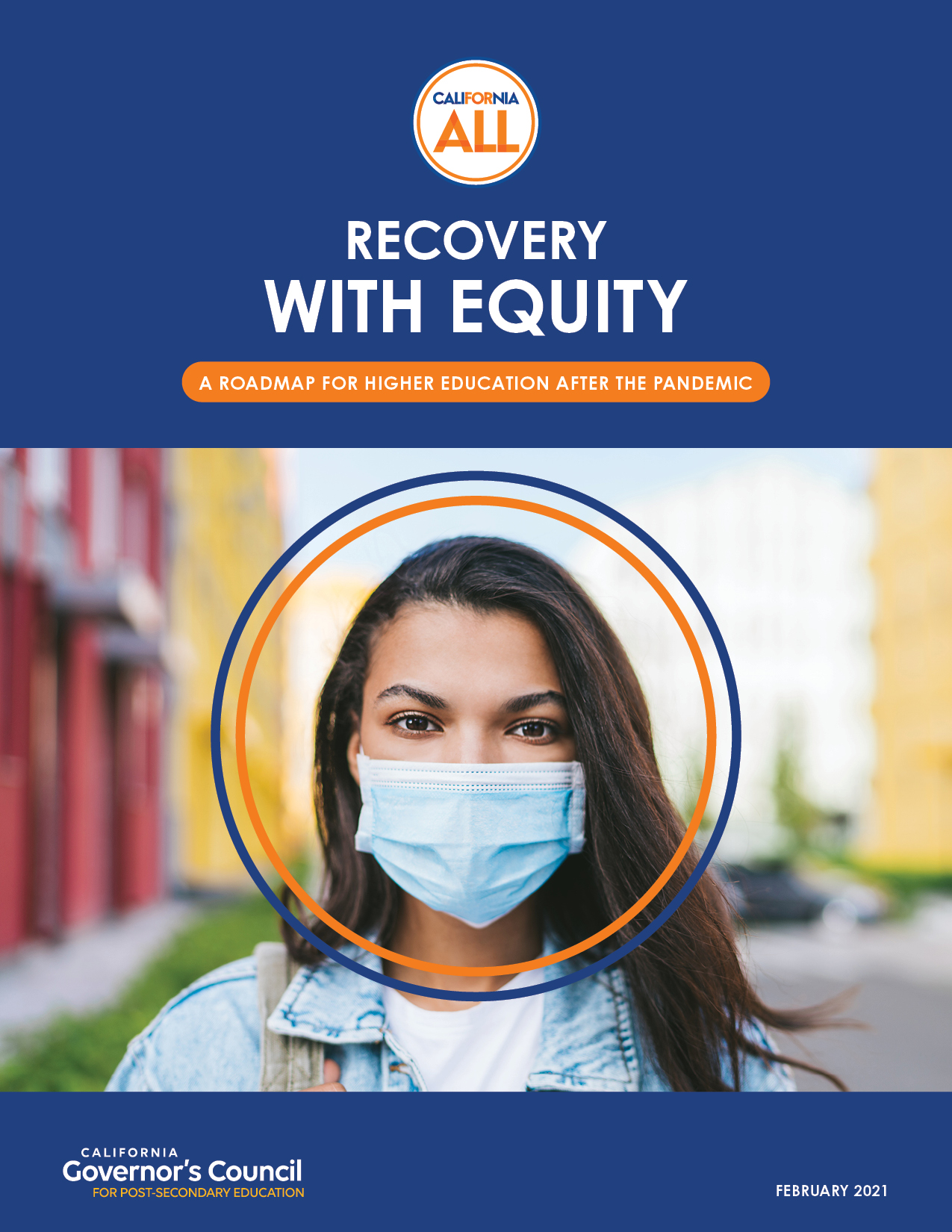Research Findings Summary
Recovery with Equity recommendations are the product of extensive research on post-secondary and workforce outcomes and experiences.
Research activities included review of key findings from existing reports; original analyses of publicly available data; and interviews, focus groups and survey responses from 105 leaders and stakeholders from K–12 and higher education, local government, nonprofit organizations, and workforce development agencies. Focus groups were also conducted with 91 diverse college and high school students from five California regions: Bay Area, San Joaquin Valley, Inland Empire, Los Angeles, and Imperial Valley.
With this data in hand, the Taskforce was able to hone in on the most important issues in the state’s post-secondary education system, with a clear understanding that Black, Latinx, Indigenous, Asian Pacific Islander, and adult students needed to be at the center of its recommendations.
Findings from reports and data analysis
- Post-secondary degrees and workforce credentials yield higher wages and lower unemployment, and demand for workers with these credentials is rising even in industries that have not traditionally required them.
- The current rate of educational attainment in California is insufficient to meet workforce needs, and there are significant gaps in educational attainment by race/ethnicity and geographic region.
- COVID-19 has exacerbated challenges for California’s post-secondary students, as evidenced by substantial drops in enrollment at California Community Colleges and the California State University.
- Low-income, first-generation, Latinx, Black, and Indigenous students—who make up most of the student population in California’s public high schools—are less likely than their peers to finish high school, complete the A–G coursework necessary for admission to the University of California (UC) and California State University (CSU), enroll in college, and graduate from college. Among these students, those who identify as LGBTQ+, are homeless, have undocumented immigration status, are English learners, have disabilities, are engaged in the foster or correctional systems, or are migrants often face particularly acute challenges.
- Barriers to access and success in California include:
– Insufficient financial aid and support for students’ basic needs
– Lack of clear pathways and processes to get to and through higher education
– Lack of coherence between K–12 and higher education as well as among the three public higher education segments
– Limited seats and course availability
– Constrained capacity to use data to track and support students
Findings from stakeholder interviews and focus groups
- Racial injustice is significant in California’s higher education system. If not addressed, the long-term impact could be even more dramatic post-COVID.
- COVID-19 has exacerbated existing inequities in society, heightening barriers to students meeting their basic needs.
- The digital divide—access to and cost of both devices and internet connectivity with sufficient bandwidth—has been fully exposed and exacerbated by COVID-19.
- COVID-19 has deeply impacted students’ mental and emotional health, causing profound losses that could have lasting effects on their wellbeing.
- Some California industries may not fully recover from the pandemic, which will disproportionately impact students prioritized in this report.
- The unpredictable nature of COVID-19 is a major factor limiting recovery efforts.
- Decreased enrollment and budget cuts due to COVID-19 exacerbate existing financial challenges and inequities in the higher education system.
- Connections between K–12 and higher education, and between higher education and the workforce need to be strengthened. Lack of flexibility and coherence within the higher education system (and related policies) and the absence of statewide, longitudinal student data create barriers to equity-focused change.
- Because of the challenges and limitations of remote instruction, some students have come to believe that higher education is no longer worth the time, expense, and effort.
LEARN MORE
Findings summarized here are explored more fully in the Recovery with Equity full report.
FURTHER RESEARCH
Additional depth and analysis by state and region are available in this foundational reserch, which guided the deliberations of the Taskforce.


The Governor’s Council for Career Education is working to empower all Californians – youth and adult learners alike – to discover, prepare for, and connect to careers.


